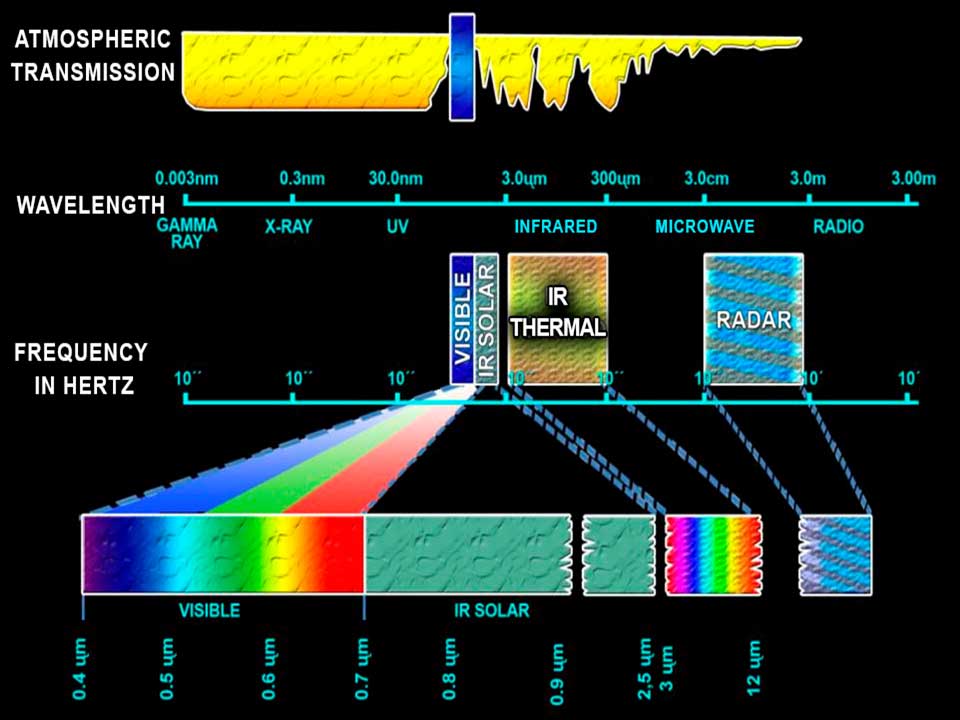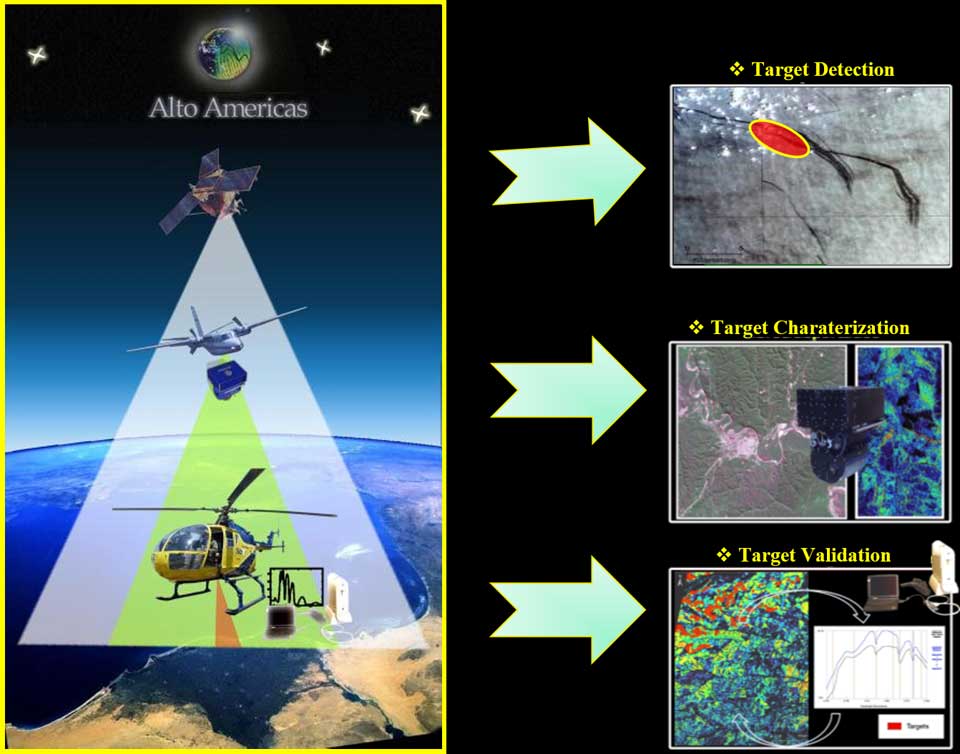
简介
- HytecAltoAmericas是一家着名的阿根廷能源, 矿业, 石油&自然气服务公司. 总部设在阿根廷, 分公司在哥伦比亚和委内瑞拉.
- HytecAltoAmericas是90年代美国Chevron Texaco(德州, 美国)研发出的技术和勘探部门, 主要针对南美洲的矿业和石油勘探和项目评估.
- 2002年, 现任的董事长兼主要股东, 瑞库尔先生, 收购了HytecAltoAmericas. 瑞库尔是位阿根廷地质师, 接受过阿根廷以及美国教育, 拥有三十年以上的国际性专业工作经验.
- 自那时起, HytecAltoAmericas就在矿业和油气业的勘探和开发领域, 活用着独一无二的高光谱及多光谱遥测技术知识 (卫星, 机载, 地面). 也因此定位成着名和受认可的公司.
HytecAltoAmericas S.A.的背景与经验
- HytecAltoAmericas在世界各地共参与了超过六十个 (60) 勘探项目.
- 在多国执行过高光谱&多光谱勘测: 阿根廷, 哥伦比亚, 委内瑞拉, 巴西, 乌拉圭, 秘鲁, 智利, 墨西哥, 美国, 阿拉伯, 苏丹, 埃及, 等等.
- 卫星影像勘查总面积超过000.000km2
HytecAltoAmericas & 哥伦比亚
- 根据HytecAltoAmericas对南美市场的了解, 自2009年公司董事便选择在哥伦比亚积极发展.
- 许多位於哥伦比亚的石油公司都选择将辨识油气潜力地区的重任交给
- 自2011年底, HytecAltoAmericas也为哥伦比亚国家石油管理局(ANH)在不同盆地确认烃类潜力地区, 而近期也和哥伦比亚的国家地质勘探局(SGC)合作制造地质制图.
- 在该国为私有企业和国家机构执行的勘查共代表哥伦比亚70%的土地..
Just like the human eye, remote sensors capture the light reflected on the surface of the earth. The difference lays on the fact that the “light” measured by this technology has a wider range of “colors”, many of which are invisible to the human eye. Technically speaking, the physical property that is measured by these sensors is the electromagnetic energy, which spans a wide range of wavelengths. The wavelengths that range from 400 to 700 nanometers belong to the visible spectrum, i.e. the wavelengths that can be detected by the human eye. There are ranges, though, that cannot be seen by the human eye, and those are the ones that provide the most valuable information.
This technology is based on the electromagnetic energy emitted by the sun, which is reflected after crossing the atmosphere and interacting with the earth’s surface. This interaction generates differential absorption at different wavelengths depending on the type of material it interacted with. Besides, after a certain wavelength, the intensity of the electromagnetic energy reflected by the sun becomes insignificant compared to the electromagnetic energy emitted by the Earth. This is the Thermal Infrared from the electromagnetic spectrum.

Remote Sensing surveys are carried out in different stages, each with its own objectives, types of sensors and platforms, purposes and levels of work.
The first stage involves the detection of potential prospective targets, by selecting and acquiring the available satellite imagery, mainly multispectral images with global coverage, such as LandSat (5 TM, 7 ETM+, 8 OLI), ASTER, MODIS, and radar imagery and data (SRTM, PALSAR, etc.). This procedure allows narrowing down the exploration areas within a basin, determining possible alteration areas, etc.
On the next stage, a great amount of spectral processing techniques are applied in order to obtain different kinds of product images (mineral indexes, vegetation indexes, soil coverage and uses, structures and lineaments, and topography, among others), so as to characterize the geological properties of the previously defined target.
The final stage of a project comprises the field validation of the targets by means of HytecAltoAmericas’ state-of-the-art hyperspectral remote sensors, both airborne, which can be adapted to any platform (planes or helicopters), or portable, used on field surveys, punctual samplings and in the lab. It is possible, this way, to determine intrinsic characteristics of each target and evaluate its potential.


The integration of all the generated remote sensing data into a Geographic Information System (G.I.S.) provides an invaluable working tool for mining projects as well as for oil & gas exploration.
By combining diverse remote sensing processing and interpretation techniques, it is possible to detect hydrocarbons. This can be achieved by means of direct methods, based on the spectral identification of oil seeps, and indirect methods, through the detection chemical, physical and thermal anomalies generated by hydrocarbon migration.
Physical and chemical alterations are produced on the surface, among which it is possible to identify soil anomalies and outcroppings caused by the reduction of iron oxides, kaolinization of feldspar, which is generally associated with faults and lineaments, and vegetation anomalies produced by the change in the vegetation physiologic state. Besides, hydrocarbon reservoirs are usually associated with thermal anomalies, which can be detected by analyzing temperature brightness and apparent thermal inertia.